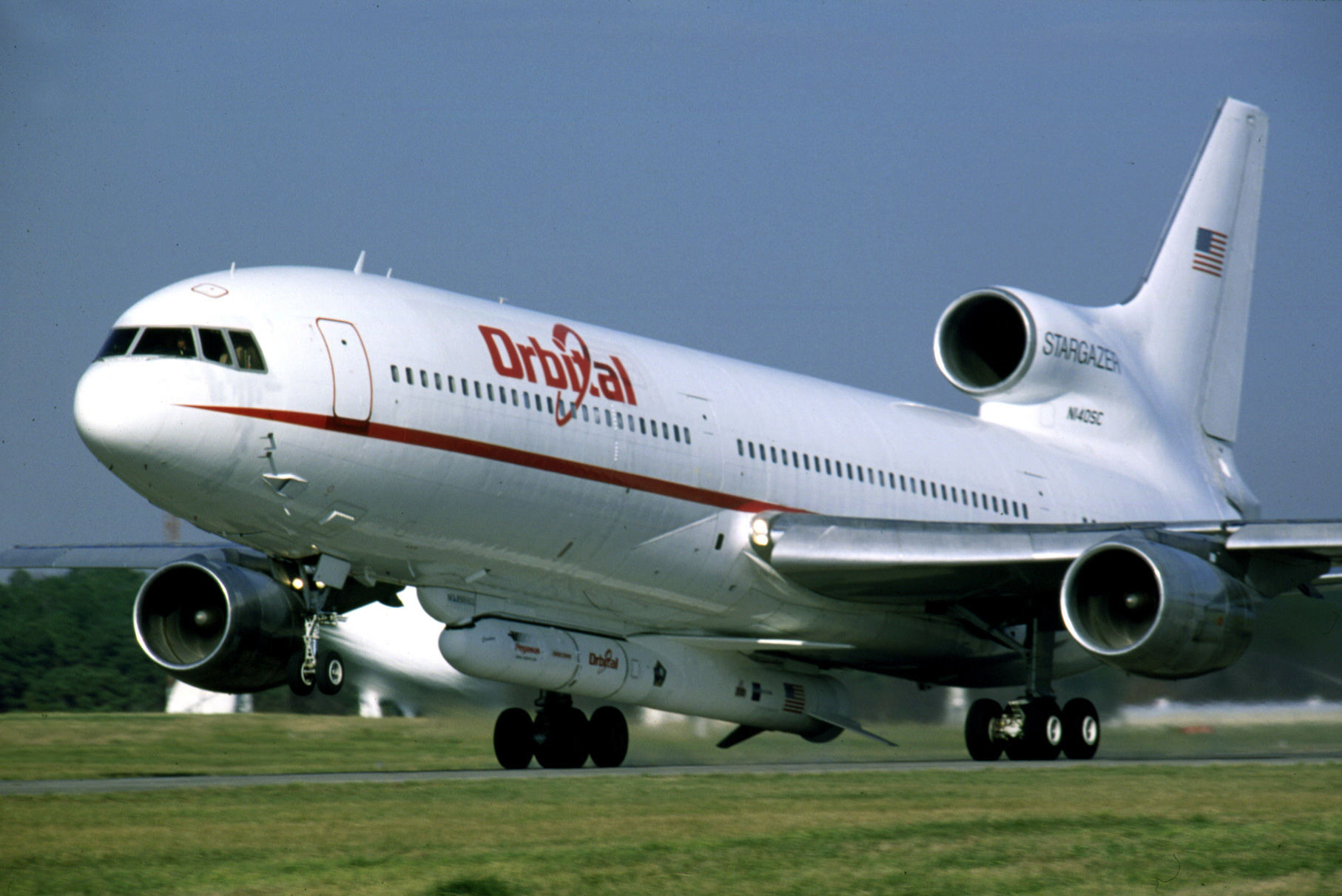|
CYGNSS
The Cyclone Global Navigation Satellite System (CYGNSS) is a space-based system developed by the University of Michigan and Southwest Research Institute with the aim of improving hurricane forecasting by better understanding the interactions between the sea and the air near the core of a storm. In June 2012, NASA sponsored the project for $152 million with the University of Michigan leading its development. Other participants in CYGNSS' development include the Southwest Research Institute, Sierra Nevada Corporation, and Surrey Satellite Technology. The plan was to build a constellation of eight micro-satellites to be launched simultaneously in a single launch vehicle into low Earth orbit, at 500 km altitude. The program was scheduled to launch December 12, 2016, and then observe two hurricane seasons. Problems with a pump on the launching aircraft prevented this first launch, but a second launch attempt took place successfully on December 15, 2016. Overview Foreca ... [...More Info...] [...Related Items...] OR: [Wikipedia] [Google] [Baidu] |
Pegasus (rocket)
Pegasus is an air-launched launch vehicle developed by Orbital Sciences Corporation (OSC) and now built and launched by Northrop Grumman. Capable of carrying small payloads of up to into low Earth orbit, Pegasus first flew in 1990 and remains active . The vehicle consists of three solid propellant stages and an optional monopropellant fourth stage. Pegasus is released from its carrier aircraft at approximately , and its first stage has a wing and a tail to provide lift and attitude control while in the atmosphere. Notably, the first stage does not have a thrust vector control (TVC) system. History Pegasus was designed by a team led by Antonio Elias. The Pegasus's three Orion solid motors were developed by Hercules Aerospace (later Alliant Techsystems) specifically for the Pegasus launcher but using advanced carbon fiber, propellant formulation and case insulation technologies originally developed for the terminated USAF Small ICBM program. The wing and fins' structures w ... [...More Info...] [...Related Items...] OR: [Wikipedia] [Google] [Baidu] |
Scatterometry
A scatterometer or diffusionmeter is a scientific instrument to measure the return of a beam of light or radar waves Scattering, scattered by diffusion in a medium such as air. Diffusionmeters using visible light are found in airports or along roads to measure horizontal visibility. Radar scatterometers use radio or microwaves to determine the normalized Radar cross-section, radar cross section (σ0, "sigma zero" or "sigma naught") of a surface. They are often mounted on weather satellites to find wind speed and direction, and are used in industries to analyze the roughness of surfaces. Optical Optical diffusionmeters are devices used in meteorology to find the optical range or the horizontal visibility. They consist of a light source, usually a laser, and a receiver. Both are placed at a 35° angle downward, aimed at a common area. Lateral scattering by the air along the light beam is quantified as an attenuation coefficient. Any departure from the clear air extinction coefficie ... [...More Info...] [...Related Items...] OR: [Wikipedia] [Google] [Baidu] |
Stargazer (aircraft)
''Stargazer'' is a Lockheed L-1011 TriStar built in 1974, that was modified in 1994 for use by Orbital Sciences (now part of Northrop Grumman) as a mother ship launch pad for the Pegasus launch vehicle. , 45 rockets (containing nearly 100 satellites) have been launched from it, using the Pegasus-H and Pegasus-XL configurations. As of 2019, ''Stargazer'' is the only L-1011 airframe still airworthy. History The first Pegasus launch to use Stargazer was conducted on 27 June 1994 as the maiden flight of the Pegasus-XL. Previous launches used the NASA-operated Boeing NB-52B Balls 8, which was also used for four subsequent launches, as the original Pegasus could not be launched from Stargazer due to clearance issues. A modified version, the Pegasus-H, was introduced to rectify this. Stargazer was also used for captive tests and transportation of the X-34 hypersonic research aircraft; however, drop tests used Balls 8. Orbital Sciences also offer the aircraft for research flights. I ... [...More Info...] [...Related Items...] OR: [Wikipedia] [Google] [Baidu] |
Global Positioning System
The Global Positioning System (GPS), originally Navstar GPS, is a satellite-based radionavigation system owned by the United States government and operated by the United States Space Force. It is one of the global navigation satellite systems (GNSS) that provides geolocation and time information to a GPS receiver anywhere on or near the Earth where there is an unobstructed line of sight to four or more GPS satellites. It does not require the user to transmit any data, and operates independently of any telephonic or Internet reception, though these technologies can enhance the usefulness of the GPS positioning information. It provides critical positioning capabilities to military, civil, and commercial users around the world. Although the United States government created, controls and maintains the GPS system, it is freely accessible to anyone with a GPS receiver. The GPS project was started by the U.S. Department of Defense in 1973. The first prototype spacecraft was lau ... [...More Info...] [...Related Items...] OR: [Wikipedia] [Google] [Baidu] |
Spacecraft Launched In 2016
A spacecraft is a vehicle or machine designed to spaceflight, fly in outer space. A type of artificial satellite, spacecraft are used for a variety of purposes, including Telecommunications, communications, Earth observation satellite, Earth observation, Weather satellite, meteorology, navigation, space colonization, Planetary science, planetary exploration, and Space transport, transportation of Human spaceflight, humans and cargo spacecraft, cargo. All spacecraft except single-stage-to-orbit vehicles cannot get into space on their own, and require a launch vehicle (carrier rocket). On a sub-orbital spaceflight, a space vehicle enters outer space, space and then returns to the surface without having gained sufficient energy or velocity to make a full Earth orbit. For orbital spaceflights, spacecraft enter closed orbits around the Earth or around other Astronomical object, celestial bodies. Spacecraft used for human spaceflight carry people on board as crew or passengers from ... [...More Info...] [...Related Items...] OR: [Wikipedia] [Google] [Baidu] |





